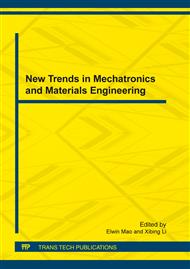p.135
p.139
p.145
p.150
p.155
p.160
p.165
p.170
p.175
Research on Web-Based Elastohydrodynamic Lubrication Oil Theory of Rolling Bearing Type Planetary Friction Transmission Mechanism
Abstract:
Service mode and dynamic network interfere techniques are analyzed. An elastohydrodynamic lubrication oil thickness theory of rolling bearing type planetary friction transmission mechanism system based on web is presented.Elastohydrodynamic lubrication theory is adopted in rolling bearing type planetary friction transmission mechanism in this paper. Research indicates that elastohydrodynamic oil file lubrication can be realized while mechanical parts with connection between points or lines run under certain conditions. At the same time, surface disrepair of the parts has relation to lubrication state. Minimal oil film thickness formula is deduced based on the elastohydrodynamic lubrication theory. It is a part of He’nan Scientific Committee science and technology research projects 《research on collaborative design and manufacturing technique in gear manufacturing based on network and multi-Agent》
Info:
Periodical:
Pages:
155-159
Citation:
Online since:
January 2012
Authors:
Price:
Сopyright:
© 2012 Trans Tech Publications Ltd. All Rights Reserved
Share:
Citation:


